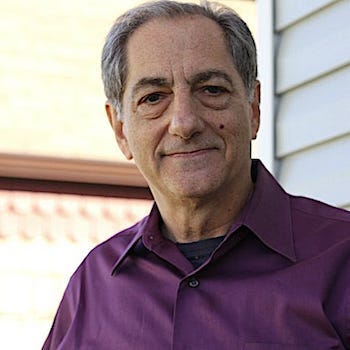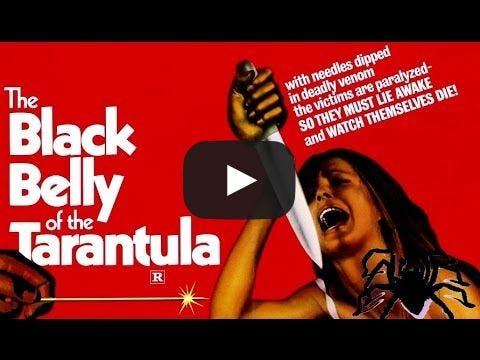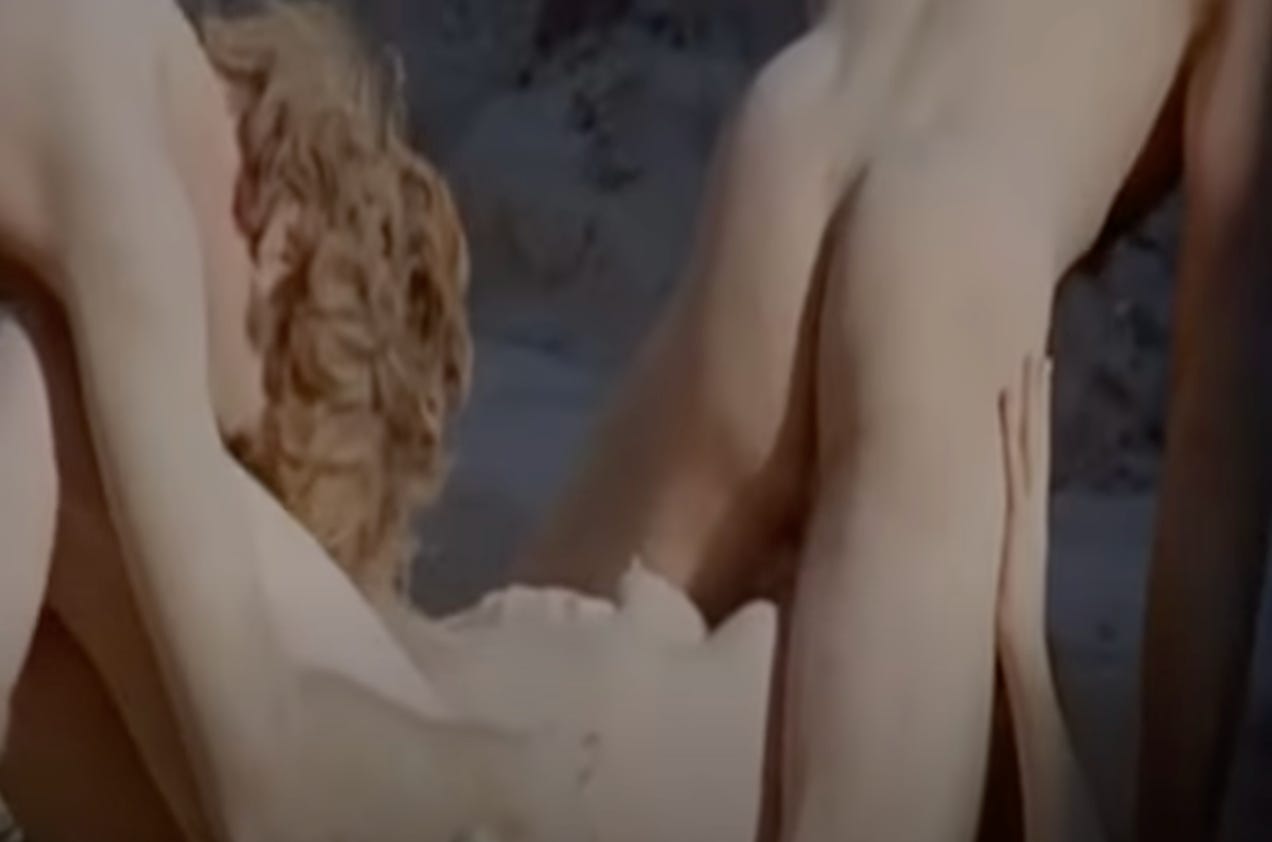Shuffle Synchronicities: Volume 1 - #255
Guest Post by Wayne Robins (Critical Conditions) + "Parking Lot" by Grouper - 09/29/21
Today we have a very special guest post from music critic Wayne Robins of the Substack, Critical Conditions! As you will see in his post, Wayne has recently made a cameo of sorts in the past week or so of Shuffle Synchronicities if you’ve been following along. He’s a low-key legend in the field and has been a really kind and avuncular correspondent of mine, even when I make a bit of fun of his elderhood ;)
Here’s a more formal bio!
Wayne Robins has been writing about rock since 1969; his first paying gig was reviewing the Rolling Stones, Ike and Tina Turner, B.B. King and Terry Reid at Oakland (Calif.) Coliseum for the Berkeley Barb during a hiatus from Bard College, where Fagen and Becker would occasionally play at impromptu Trips Festivals.
After graduating from the University of Colorado in 1972, an academic career highlighted by seeing Elvis Presley perform in Denver, he somehow landed a job in his native New York City as editor/writer for CBS Records’ Playback magazine. Writing for the Village Voice, Rolling Stone, but especially Creem, he moved to Birmingham, Mich. in March, 1975 to become editor of Creem magazine, where he spent six months. Returning home to New York, he followed Robert Christgau, Dave Marsh and Tony Kornheiser as pop writer for Newsday and New York Newsday, a gig which lasted from 1975-1993.
It was then he decided he’d rather write about meatloaf than Meat Loaf, and joined the newspaper’s food department. With the closing of New York Newsday in 1995, Robins wrote food columns for the Newark Star-Ledger and the N.Y. Daily News, became the "Raising Daddy" columnist for MSNBC.com in 1998, taught journalism and received his Master’s degree as the Chen Sam/Elizabeth Arden fellow at the New York University graduate school of journalism’s Cultural Reporting and Criticism section.
Wayne is the author of A Brief History of Rock… Off the Record and a member of the editorial board of the journal of Rock Music Studies. His essays can be found in anthologies about Steely Dan, Bob Dylan, Frank Sinatra, Joni Mitchell, Leonard Cohen, Paul Simon and more. He is an adjunct professor of journalism at St. John’s University in Queens, New York.
Find some of his past work archived on Rock’s Back Pages as well as recent stuff on his Substack.
OK, take it away, Wayne!
"LAX (demo)" by Conor Oberst
What is a Conor Oberst song doing on my playlist? It must have been because I once liked Bright Eyes a little bit. I had spent six months as acting reviews editor at Billboard, where I had also been a copy editor for five years, before I got laid off in June 2009. This was the Bright Eyes era in American popular song, and I rooted for any band that could sustain itself and thrive in the Omaha, Nebraska, indie demimonde. Not long ago I heard a Conor Oberst song, "L.A.X.," that sounded like cauliflower crust frozen pizza. It was on the non-commercial "college" radio station, the one with professional disc jockeys. The station with the Brandi Carlisle-and-comrades format. I heard Oberst sing "L.A.X." and was bitterly disappointed at its lack of imagination. Because it's about picking up someone at the airport, and lamenting "why she let me fall in love with you." So droopy and moony.
A song called "L.A.X.": It can't be about the airport, it demands a pun: "My L.A. Ex." I got home and wrote the lyrics, a rollicking Dave Alvin-meets-Delbert McClinton type of song, about a hellraising woman, just at home in Silver Lake as she would be on Rodeo Drive, a gold cigarette case filled with joints of the finest sensimilla. A woman who could get the best table in the Ivy without a reservation and get kicked out the same night after her third martini. She can take you or leave you, and in the song, she does both: She takes you and leaves you, she breaks your heart, steals your money, takes your boots, and it's the happiest you've ever been in your life.
Speaking of L.A. exes, it has come to my attention that I've been a cameo character the last week or so in Dave's Shuffle Synch. In #245, Dave wrote about being depressed, and shuffled the instrumental "Tarantula" by Al Casey with the Storms. Casey was a versatile session player and guitarist especially in the late 1950s/early 1960s: He's best known, perhaps, as the guitarist on Jody Reynolds' "Endless Sleep."
I also emailed Dave, since we are both sort of seekers, and I am probably old enough to be his dad, so I sent him some paternal advice: Esalen psychologist sounded much more promising than waiting on an actively rejecting ex.
In #251, Dave described my reaching out to support him as "a reader of the Substack, who is a relatively well-known music writer from the first generation of rock critics of the late 60s/early 70s, reached out after reading that post and urged me to try to date the therapist woman." Therapist did not say I was wrong.
I think "relatively well-known" is fair, but my career continues: Critical Conditions by Wayne Robins, is the memoir people have been asking me to write (at least those to who I am known) over a 50-year-career. One version of the memoir was titled "Almost Almost Famous," but you could put another "almost" in front of that, and I would be OK with that. I'm kind of a regional artist. I'm being inducted into the Long Island Music Hall of Fame in 2022 as a music journalist. If you know me, you know me from the original Creem (contributing editor 1971-1975, editor in chief 1975), or from Newsday, the Long Island newspaper and its New York City edition (1975-1995), or from the Village Voice (1972-1975).
In #252, after the James Blake date worked out well, she texted him, "Just don't give the old Hollywood music critic credit for this!" I'm not from Hollywood, though I frequently visited music business L.A., sometimes at least once a year. Times Mirror (the L.A. Times) owned Newsday, and on the west coast I filed copy from their "velvet coffin" newsroom. And I'm getting old (71) but I'm not too old to get caught in K-pop Twitter stans-offs between fans of BTS and Red Velvet. I played Kanye West's "Donda" chant
to clear the spiritual air for my Literature and Visual Media students at St. John's University in Queens, N.Y., after we watched the "two minute hate" scene in Michael Radford's movie version of George Orwell's "1984." They were appropriately moved.
I've got my own "Tarantula" song to throw in the mix, so it's not shuffle but free association. The song is Ennio Morricone's "La Tarantula del Verte Nero" the title song of the 1971 giallo masterpiece directed by Paolo Cavara. Among the details: It stars three beautiful former "James Bond" girls, including Barbara Bach, the longtime wife of Ringo Starr. There's no rousing, swelling spaghetti western theme usually associated with Morricone here. It's a very spare collection of single piano chords, the occasional jangling of electronic wind effects, tormented footsteps, or the crawling of a tarantula. At least that's the way it sounds on my iTunes playlist, that has the entire album. The YouTube version has the the opening theme that is more romantic and melodic. I used to be a big giallo fan when Netflix first started and you could watch them by the dozen. The music sounds like Albert Ayler at half speed. You can imagine being stuck in a remote castle where your hosts are very well-dressed, well-coiffed, and well-educated vampires. They first try to persuade you to contribute to a Croce Rossa Italiana blood drive, voluntarily. But if you’re not so inclined, that's fine. Just have a glass of wine. Red wine. And don't bother setting your alarm for the morning, your chances of waking up are not that good.
Also, as I told Dave, "Tarantula" is also the name of Bob Dylan's most notable early prose/poetry effort. It takes a lot to laugh, it takes a train to cry, to like it (it was not widely admired in its time, written circa 1966, bootlegged until published in 1971). But some current copies are stamped with a seal "Winner of the Nobel Prize for Literature." Dylan, not "Tarantula." The book is hard to read, but hard to dismiss.
Did I mention my Substack is called Critical Conditions?
Haha, Wayne!
I love how art intersects with life which intersects with art and back again!!
So that we realize there really is no difference???!!!
And thank you for your ‘paternal advice’ regarding the therapist.
Though I must also correct the record.
She’s not from Esalen.
And she’s a marriage and family therapist, not a PsyD or PhD psychologist.
But, more importantly, we’re hanging out again tonight!
Which is perfect timing for your guest post, LOL.
In regards to your Conor Oberst song, “LAX”…
I loved the comparison to ‘cauliflower crust frozen pizza’. Ha!
That’s a Hall of Fame quality of music criticism if I’ve ever seen it :) And a quality I don’t have yet. But maybe you also learned it in your days as a food writer.
In terms of memoiristic synchronicity, I can’t quite tell what the status is of my relationship with the therapist woman yet.
You're a toy I like
She wondered on Saturday after we made out the first time and then were driving to the roller skating 70s party mentioned here, if I’d be interested in fulfilling her fantasy of hooking up with two men at the same time, in particular with the guy she’s recently started seeing in Washington state long distance.
I replied, something like: I’m pretty fluid these days, so, maybe?
It's all within reason; it's all been in my dreams
Or to quote from the ‘Advice to Hobo's Model’ section of the sort of Nobel Prize-winning Bob Dylan book Tarantula :
ye just might change your style of fornicating, sword swallowing
In all, I loved your post, Wayne! Thanks so much for collaborating with me.
I only wish you included your lyrics to your song: “My L.A. Ex”!
Let’s see how it synchronizes with my song from today.
Which is:
“Parking Lot'“ by Grouper
It’s a very interesting synchronicity!
Because Grouper's Liz Harris said to NPR that ‘Parking Lot’ was inspired by a scene from the 1970 film Zabriskie Point.
“I heard a lot about the movie Zabriskie Point from Roy Montgomery and Paul Clipson years before I finally saw it. There is a climactic scene in the California desert — writhing bodies, frenzied dancing; anxiety and pleasure confused in a massive primordial orgy of symbolic transformation. Poetic depiction of the political and social turmoil of the sixties, a return to human nature, the raw chaotic power of innocence and the desire for change. I was struck by how presciently the film captures an essence of the desert I had felt, the sharp contrast given objects by bright light, colors popping while also in retreat. Something psychological, and polar. Compression of experience. The heat an immediate reminder of our delicate mortality. In the desert it becomes small triumph simply to make it across a hot parking lot. In the brutality of its extremes we are reduced to puppets, silhouettes cast upon a screen, thrown upon a stage. Simple acts becoming heightened and more difficult, a series of amplified gestures.”
If you clicked on post #245, which Wayne noted above, you would have seen that the therapist woman kind of sort of invited me to the Mojave Desert to watch the Pisces full moon the weekend before we ended up going to the James Blake concert, but which I said no to, which was the impetus for Wayne writing to me in the first place.
Wayne had ‘paternally’ written in his email: “Try to accept what she is offering, forget the ex, and join her in the desert, or for tea or coffee in L.A., when it is convenient.”
The Mojave Desert is actually the location of the climactic scene of Michelangelo Antonioni’s Zabriskie Point, which Grouper sings about, with lyrics including these:
Can't stop my sire beckoning
The desert is asleep
Kiss the sky against the rocks
and
The night's berth is wide
Hands on the top of these tangled locks
Inward, it rushes out
The scene is actually viewable on YouTube, but age-restricted.
It’s worth seeing at this link though.
Time code 1:21-1:22 even has a brief moment of a MFM threesome for the main character played by the actress Daria Halprin
Is that a Shuffle Synchronicity?
Or a Critical Condition??
Or a both/and???
Okay, that’s the two hundred and fifty-fifth Shuffle Synchronicities.
Today, in Other! Substacks, check out our guest poster Wayne Robins’ Substack Critical Conditions, in particular, his recent post about the history of East Coast music critics dislike for the California rock band The Eagles and their (in)famous song “Hotel California.”







